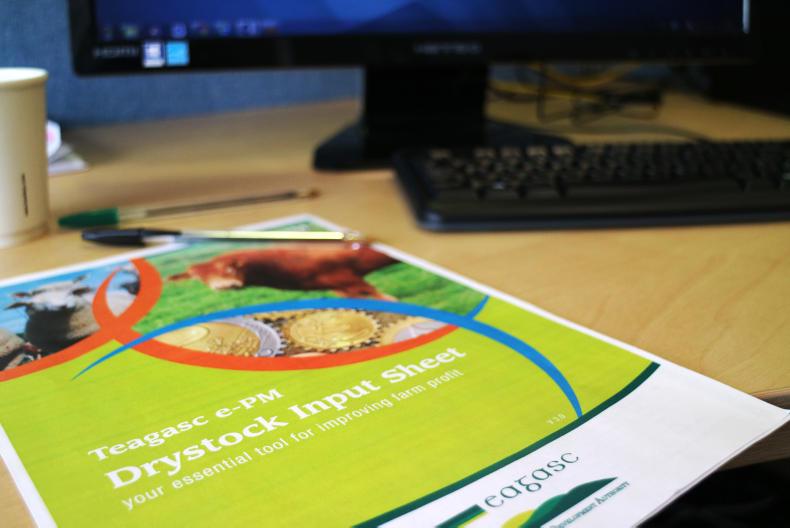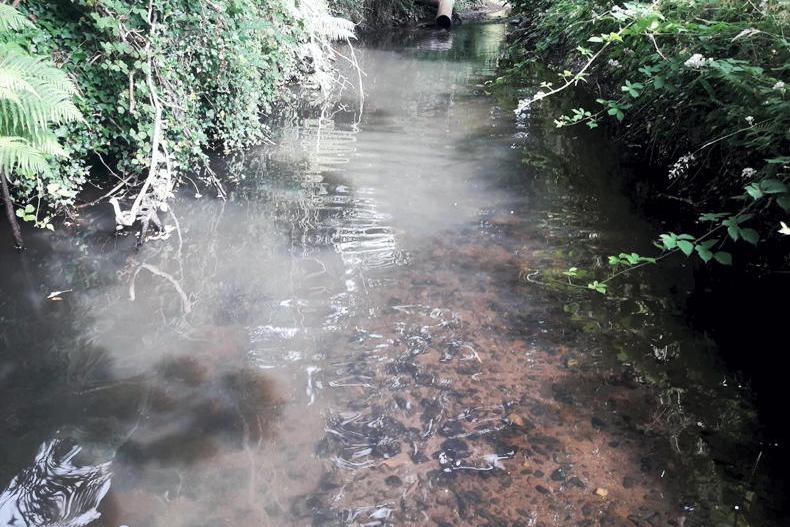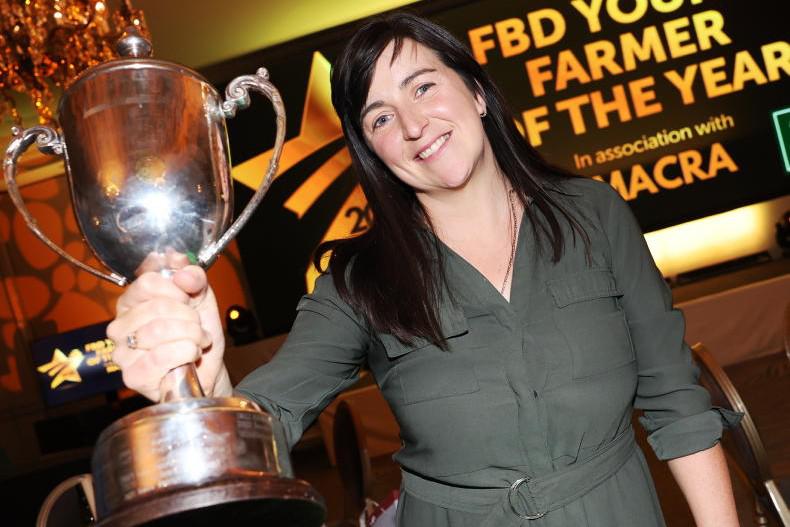The new year is a good time to reflect on where the farm business is and where it is going. To steer things in the right direction, it’s important to know where the farm is at the moment in terms of finances and performance.
Stocking rate, output in kg/ha, output per LU, variable costs, fixed costs and net margin are all important methods of assessing performance.
A really useful tool that combines both physical and financial performance analysis is the Teagasc e-profit monitor. It is relatively simple to fill out, with a dedicated input sheet for each enterprise.
Much of the animal data can now be downloaded from the ICBF website, which just leaves the financial data to be inputted. Your local Teagasc adviser will help out in completing your profit monitor.
More importantly, when completed, arrange to sit down and look at where the improvement needs to be made and where to start. Complete this as early as you can in January.
Making plans to make changes in June won’t reap the same reward. I’ve outlined below a few simple steps to completing a profit monitor in 2018.
1.Contact your Teagasc adviser.
Don’t wait for the Teagasc adviser to ring you asking to complete a profit monitor. Take the initiative in 2018 and pick up the phone to organise it.
Set up a quick appointment or, if you have completed a profit monitor before, get them to post out an input sheet or download it from the Teagasc website. Once you have your input sheet, a lot of data can be retrieved quite easily.
2. Retrieve information.
Direct payments can be retrieved from agfood.ie quite easily. Just go to the payments screen. Animal sales data, weights, carcase weights, etc, can all be downloaded from the ICBF system very easily.
A profit monitor report can be printed off and data transferred to the input sheet. Private sales won’t be included on this report, so it’s important not to forget about them. Make a list of private sales and add them in along with the ICBF data.
Variable costs are probably the most time-consuming exercise, depending on the number of dockets and invoices. Have a simple sheet with the key headings like meal, fertiliser, vet, etc, and just go through your invoices for the year.
3. Input data. Once the input sheet is completed, it can be inputted either by yourself online or bring the input sheet to your Teagasc adviser to input on the system.
Thirty minutes will generally see this task completed.
Once inputted, several useful reports can be printed off for comparison purposes. Some of the most interesting reports compare year-on-year performance and indeed Teagasc specialists would advise that any profit monitor shouldn’t be analysed in isolation, but rather analysed taking in a number of years of performance.
The scorecard report will highlight key areas where performance was poor and also where you are performing well.
4. Analyse data. Once the data has been inputted and reports have been printed off, take some time to study reports on your own, making sure you understand everything and that everything makes sense. This is one of the most important things that you will do with your profit monitor.
Once this is complete, arrange a meeting with your adviser to discuss the results. How do you compare with the national average or the BETTER farms? What are the strengths and weaknesses of your farm?
5. Decide what has
to change.
There is no use in going to the trouble and effort of completing a profit monitor if change doesn’t take place.
List five things that you will try to change in 2018. For example, drop rented land, increase cow numbers, increase weight gain and finish more off grass, make better-quality silage and reduce concentrate bill or calve earlier to get heavier weanlings and a higher sale price.
Keep a note of these targets or changes and how you are going to go about meeting them and look back at the end of the year to see what was achieved and how it affects the bottom line.
Taking it to the next level
Some of the best discussion groups in the country will have a dedicated profit monitor meeting at the end of January each year where each profit monitor will be displayed and questions asked about each system and why some people achieved more than others.
Granted this could be classified as some people’s worst nightmare. It can work really well for some groups.
However, these groups seem to be making some real progress on an annual basis.
This probably only works in a long-established group where farmers are very comfortable in taking openly about sometimes sensitive financial data.
Read more
Best suckler farms make three times more profit than average
Five New Year resolutions for beef farmers
The new year is a good time to reflect on where the farm business is and where it is going. To steer things in the right direction, it’s important to know where the farm is at the moment in terms of finances and performance.
Stocking rate, output in kg/ha, output per LU, variable costs, fixed costs and net margin are all important methods of assessing performance.
A really useful tool that combines both physical and financial performance analysis is the Teagasc e-profit monitor. It is relatively simple to fill out, with a dedicated input sheet for each enterprise.
Much of the animal data can now be downloaded from the ICBF website, which just leaves the financial data to be inputted. Your local Teagasc adviser will help out in completing your profit monitor.
More importantly, when completed, arrange to sit down and look at where the improvement needs to be made and where to start. Complete this as early as you can in January.
Making plans to make changes in June won’t reap the same reward. I’ve outlined below a few simple steps to completing a profit monitor in 2018.
1.Contact your Teagasc adviser.
Don’t wait for the Teagasc adviser to ring you asking to complete a profit monitor. Take the initiative in 2018 and pick up the phone to organise it.
Set up a quick appointment or, if you have completed a profit monitor before, get them to post out an input sheet or download it from the Teagasc website. Once you have your input sheet, a lot of data can be retrieved quite easily.
2. Retrieve information.
Direct payments can be retrieved from agfood.ie quite easily. Just go to the payments screen. Animal sales data, weights, carcase weights, etc, can all be downloaded from the ICBF system very easily.
A profit monitor report can be printed off and data transferred to the input sheet. Private sales won’t be included on this report, so it’s important not to forget about them. Make a list of private sales and add them in along with the ICBF data.
Variable costs are probably the most time-consuming exercise, depending on the number of dockets and invoices. Have a simple sheet with the key headings like meal, fertiliser, vet, etc, and just go through your invoices for the year.
3. Input data. Once the input sheet is completed, it can be inputted either by yourself online or bring the input sheet to your Teagasc adviser to input on the system.
Thirty minutes will generally see this task completed.
Once inputted, several useful reports can be printed off for comparison purposes. Some of the most interesting reports compare year-on-year performance and indeed Teagasc specialists would advise that any profit monitor shouldn’t be analysed in isolation, but rather analysed taking in a number of years of performance.
The scorecard report will highlight key areas where performance was poor and also where you are performing well.
4. Analyse data. Once the data has been inputted and reports have been printed off, take some time to study reports on your own, making sure you understand everything and that everything makes sense. This is one of the most important things that you will do with your profit monitor.
Once this is complete, arrange a meeting with your adviser to discuss the results. How do you compare with the national average or the BETTER farms? What are the strengths and weaknesses of your farm?
5. Decide what has
to change.
There is no use in going to the trouble and effort of completing a profit monitor if change doesn’t take place.
List five things that you will try to change in 2018. For example, drop rented land, increase cow numbers, increase weight gain and finish more off grass, make better-quality silage and reduce concentrate bill or calve earlier to get heavier weanlings and a higher sale price.
Keep a note of these targets or changes and how you are going to go about meeting them and look back at the end of the year to see what was achieved and how it affects the bottom line.
Taking it to the next level
Some of the best discussion groups in the country will have a dedicated profit monitor meeting at the end of January each year where each profit monitor will be displayed and questions asked about each system and why some people achieved more than others.
Granted this could be classified as some people’s worst nightmare. It can work really well for some groups.
However, these groups seem to be making some real progress on an annual basis.
This probably only works in a long-established group where farmers are very comfortable in taking openly about sometimes sensitive financial data.
Read more
Best suckler farms make three times more profit than average
Five New Year resolutions for beef farmers









SHARING OPTIONS